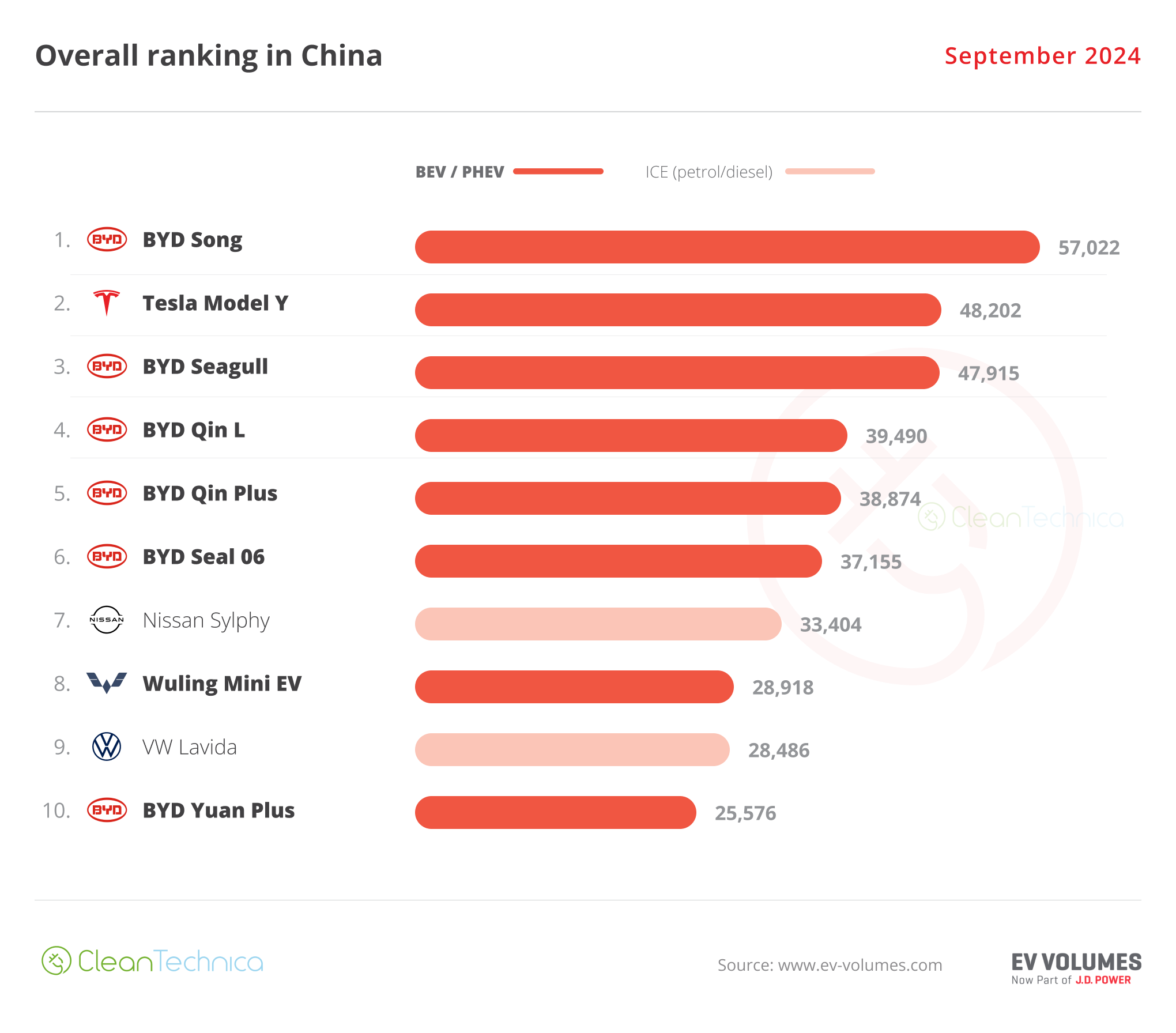
In April, the EPA proposed new exhaust emissions rules for 2027 and beyond that would require automobile manufacturers to limit carbon dioxide emissions to no more than 82 grams per mile on average across a company’s entire line of light duty cars and trucks by model year 2032 — a 56% reduction from the 2026 target.
All proposed federal rules have a period of time — usually 90 days — during which members of the public and industry representatives may comment. Federal agencies then take those comments into account before promulgating their final rules.
The proposed exhaust emission rules do not specify what manufacturers should do to meet them. If they can make internal combustion engines that comply with the standard, great. But the reality is that conventional cars and trucks cannot meet those standards. The result is that about two-thirds of all new light duty cars and trucks will need to be powered by electricity by 2032 in order to comply with the regulations.
That has traditional automakers upset. In comments filed with the EPA, Toyota and Stellantis warned the proposed exhaust emission rules for cars and light trucks are overly optimistic, and discriminate against plug-in hybrid vehicles, according to a report by Automotive News. They said that the rules would put supplies of the minerals needed to make batteries for all those cars and trucks under tremendous strain.
The EPA proposal “underestimates key challenges, including the scarcity of minerals to make batteries, the fact that these minerals are not mined or refined in the U.S., the inadequate infrastructure and the high cost of battery electric vehicles,” Toyota said. This is the same company that announced a few days ago it is on the verge of making solid-state batteries that will cost half as much as today’s lithium-ion batteries. If it sounds like Toyota is talking out of both sides of its mouth, that’s because it is.
Industry Digs In

Photo by Khunkorn Laowisit, via Pexels
Stellantis, of course, has been bringing up the rear of the EV revolution ever since former CEO Sergio Marchionne begged people not to buy the original Fiat 500e because the company lost too much money on every car sold. Stellantis is working on battery-electric vehicles for its Dodge, RAM, and Jeep vehicles, but is also heavily dependent on vehicles with internal combustion engines.
Its latest excrescence is the Jeep Grand Wagoneer, a monster of a vehicle that in four-wheel drive configuration struggles to eke out 16 miles per gallon in city driving. An electric version of that car would require a monstrous battery of 200 kWh or more, particularly since it has the aerodynamic efficiency of a cinder block.
In its comments, Stellantis said the EPA had an “overly optimistic expectation for EV market growth” and was “assuming a ‘perfect’ transition,” while underestimating challenges such as lagging manufacturing capacity and consumer support. The EPA’s envisioned EV “adoption rate far exceeds what is supported by the policy actions in place and adds significant risk to the automotive industry who must comply with these standards whether these assumptions hold true or not.”
Ford has taken a somewhat softer approach, but in its comments it is still encouraging the EPA to ease the stringency of its requirements in between 2027 and 2029 to create a softer on-ramp to the planned 2032 standards. As proposed, EPA would mandate roughly equal pollution reductions annually.
For its part, Toyota called the initial proposed annual stringency increases “extreme.” It faulted the EPA for relying on a “cursory assessment” about the supply of critical battery minerals, including from U.S. deposits.
Not surprisingly, Tesla is completely comfortable with the proposed EPA exhaust emission rules, since none of the vehicles it manufactures have any exhaust emissions at all. It urged the EPA to move even more aggressively, given “the rapid pace of light duty vehicle electrification.” Since the technology has “been amply demonstrated, is being rapidly deployed, and has significantly decreasing competitive costs,” the agency should target a battery-electric vehicle penetration rate of at least 69% in model year 2032, Tesla said.
Exhaust Emissions Vs. Battery Materials
There is more going on here than just new standards for exhaust emissions. The US is trying to address the fact that China has a near monopoly on the materials and components needed to make batteries for electric cars. That is largely because the Chinese government recognized the onset of the EV revolution early and encouraged its domestic corporations to secure access to the materials and learn how to turn them into batteries.
Now the US and the rest of the world are playing catch-up after allowing their own domestic manufacturing infrastructure to be hollowed out by the allure of globalization. It has finally dawned on people, largely because of the recent pandemic, that relying on others to supply critical materials is not a good long-term strategy.
The upshot is that auto manufacturers are getting slapped around by two competing forces — the need to produce electric cars and the need to source the components and materials for them domestically in order to make sure their products qualify for federal tax credits. If they don’t, those cars and trucks will be noncompetitive in the marketplace. Opening new mines and getting them into operation takes years, so the companies are not entirely wrong to say the EPA is making a lot of assumptions that may not turn out to be accurate.
Auto Industry Culture
While it is fair to say the car companies have some valid points — the proposed EPA rules are ambitious — those who have been following the auto industry for decades know those companies have a history of being opposed to… well, pretty much anything — padded dashboards, collapsing steering wheels, seat belts, air bags, cup holders.
They have always pushed back against emissions and fuel economy standards. It’s pretty much automatic. If the government is fer ’em, they’re agin ’em. So it’s not surprising they are opposed to this latest round of exhaust emissions standards. It would be startling if they weren’t.
Everybody is all in favor of reducing carbon emissions, just as long as it doesn’t interfere with their ability to make money or require them to make any substantive changes in how they do business. An idealist may peer into the future and see a time when everyone will drive an electric car and plug it in when it’s not being used to provide back up power to homes and businesses while stabilizing the electrical grid.

The Role Of Government
Every challenge is an opportunity, and yet the default for humans is to resist change for as long as possible. Government policies drive lots of innovations. If two-thirds of new light duty vehicles in the US in 2029 are battery-electric, people will wonder what everyone was so worried about back in 2023. But if 2032 gets here and only 40% of new car sales are electric, then all these doubters will be able to say, “See? We told you so but you wouldn’t listen.”
Generally speaking, government policies should push the envelope and create an impetus for change. With the world beginning to melt as it overheats, it’s hard to say the EPA exhaust emissions proposal is too bold. The entire new car industry may become irrelevant if climate change alters the basic premise that personal transportation devices are a necessity. Not only may the car companies be thinking too small, they may be missing the larger picture altogether.
I don’t like paywalls. You don’t like paywalls. Who likes paywalls? Here at CleanTechnica, we implemented a limited paywall for a while, but it always felt wrong — and it was always tough to decide what we should put behind there. In theory, your most exclusive and best content goes behind a paywall. But then fewer people read it! We just don’t like paywalls, and so we’ve decided to ditch ours. Unfortunately, the media business is still a tough, cut-throat business with tiny margins. It’s a never-ending Olympic challenge to stay above water or even perhaps — gasp — grow. So …




